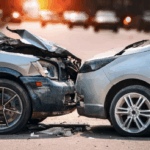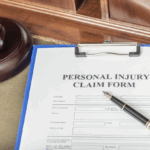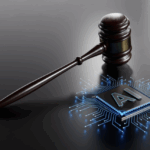Scaffolding is a critical part of many construction and maintenance projects, allowing workers to perform tasks at elevated heights. However, working on scaffolds also presents significant risks. According to the Occupational Safety and Health Administration (OSHA), thousands of construction workers are injured each year due to scaffolding-related accidents, with many of these incidents resulting in severe injuries or fatalities.
Understanding the primary causes of these accidents is crucial for improving safety and preventing future tragedies. Below, we’ll explore the main causes of deaths and injuries on scaffolds and what can be done to reduce these hazards.
1. Falls from Height
One of the leading causes of injuries and fatalities on scaffolds is falls. Falls can happen when workers slip, trip, or lose their balance on the scaffold. These falls can be caused by a variety of factors, including:
- Inadequate Guardrails or Fall Protection – Scaffolds must have proper guardrails or fall protection systems, such as harnesses or safety nets, to prevent workers from falling. If these protections are absent or improperly installed, the risk of falls increases significantly.
- Unstable Platforms – Scaffolds need to be built on solid, level surfaces. If the base is unstable or the scaffold is not properly anchored, it can wobble or collapse, causing workers to lose their footing.
- Slippery or Cluttered Surfaces – Tools, materials, and debris left on the scaffold can create tripping hazards. Additionally, wet or icy conditions can make surfaces slippery, increasing the likelihood of a fall.
2. Scaffold Collapse or Structural Failure
A scaffold collapse is another serious risk that can lead to multiple injuries or fatalities. Collapses usually occur when the scaffold is improperly assembled or not strong enough to support the weight it bears. Common causes of scaffold collapses include:
- Overloading the Scaffold – Every scaffold has a specific load capacity, which includes the weight of workers, tools, and materials. Exceeding this limit can cause the scaffold to collapse under the strain.
- Poor Construction or Materials – Using substandard materials or not following the manufacturer’s guidelines for assembling the scaffold can weaken its structure, increasing the risk of a collapse.
- Shifting or Unstable Ground – Scaffolds set up on uneven or shifting ground are prone to collapsing. If the foundation moves, the scaffold can become unsteady and fail.
3. Being Struck by Falling Objects
Workers on scaffolds are not only at risk of falling themselves, but they are also vulnerable to being struck by objects falling from above. Tools, materials, or debris that are not properly secured can fall and strike workers below. These incidents can result in head injuries, broken bones, or even death. The primary causes of falling objects on scaffolds include:
- Improper Storage of Tools and Materials – When tools and materials are left unsecured on scaffold platforms, they can easily be knocked off or fall when the scaffold shifts.
- Lack of Toe Boards – Toe boards are essential for preventing objects from falling off the edge of a scaffold. If toe boards are missing, items on the platform can slide off and pose a danger to those below.
4. Electrocution Hazards
Another significant cause of injuries and deaths on scaffolds is electrocution. Scaffolds are often erected near power lines or electrical systems, and if workers come into contact with live wires or equipment, they can be electrocuted. Electrocution risks are higher when:
- Scaffolds Are Built Too Close to Power Lines – OSHA requires scaffolds to maintain a minimum safe distance from power lines. If this distance is not observed, workers risk accidentally touching or coming too close to energized wires.
- Inadequate Grounding or Electrical Safety Measures – If scaffolds or equipment used on scaffolds are not properly grounded, electrical currents can flow through metal parts, posing a significant electrocution risk to workers.
5. Faulty or Inadequate Training
Many scaffold-related accidents occur because workers lack proper training on scaffold safety. Without adequate training, workers may not know how to correctly assemble, use, or disassemble scaffolds. This can lead to dangerous situations, including improper use of equipment, failure to recognize hazards, or not following safety procedures. Common training-related issues include:
- Not Understanding Load Limits – Workers may overload scaffolds if they are unaware of the weight limits, leading to collapse or instability.
- Improper Use of Safety Gear – Workers may not know how to correctly use harnesses, guardrails, or other fall protection equipment, increasing the risk of falls.
- Failure to Recognize Electrical Hazards – Inadequately trained workers may not be aware of the dangers posed by nearby power lines or improperly grounded equipment, putting them at risk of electrocution.
6. Weather-Related Risks
Weather can have a significant impact on scaffold safety. High winds, rain, snow, or icy conditions can create dangerous working environments. Common weather-related hazards include:
- Slippery Surfaces – Rain, snow, or ice can make scaffold platforms slippery, increasing the risk of falls.
- High Winds – Strong winds can make it difficult for workers to maintain their balance on scaffolds. In some cases, high winds can even cause scaffolds to collapse or shift.
- Cold Weather – Cold weather can make materials more brittle, leading to potential equipment failure or instability.
How to Prevent Scaffold-Related Injuries and Deaths
While scaffolding presents many risks, accidents can be prevented with proper precautions, training, and equipment. Here are some critical safety measures to reduce the risk of scaffold-related injuries and fatalities:
- Comprehensive Training – Workers should receive thorough training on scaffold assembly, load limits, fall protection, and electrical hazards before they begin work on scaffolds.
- Regular Inspections – Scaffolds should be inspected regularly to ensure they are in good condition, properly assembled, and free of hazards like loose parts or unstable surfaces.
- Fall Protection Systems – Guardrails, harnesses, and other fall protection equipment should always be used to prevent workers from falling off scaffolds.
- Proper Material Handling – Tools and materials should be secured, and toe boards should be installed to prevent objects from falling off scaffold platforms.
- Maintain Safe Distances from Power Lines – Scaffolds must be erected a safe distance away from power lines, and electrical systems should be de-energized when possible.
- Adapt to Weather Conditions – In bad weather, particularly in high winds or icy conditions, workers should refrain from using scaffolds until conditions improve. Scaffolds should also be cleared of snow, ice, or other debris before use.
Conclusion
Scaffold-related accidents are preventable, but they continue to be a major cause of injuries and fatalities in the construction industry. The main causes—falls, scaffold collapses, falling objects, electrocution, lack of training, and weather conditions—can all be mitigated with proper safety measures, training, and awareness.
At Robert J. DeBry & Associates, we understand the devastating impact a scaffold-related accident can have on workers and their families. If you or a loved one has been injured or killed in a scaffold accident, our experienced personal injury attorneys are here to help. We are dedicated to holding negligent parties accountable and ensuring victims receive the compensation they deserve.
If you need legal assistance following a scaffold accident, contact Robert J. DeBry & Associates today for a free consultation. Safety should always come first—let us help you protect your rights when it doesn’t.



